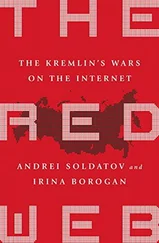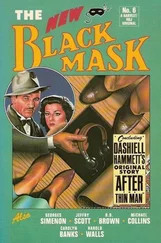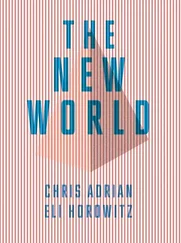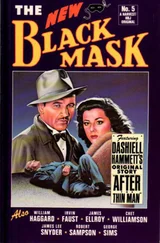Theodor W. Adorno - The New Music
Здесь есть возможность читать онлайн «Theodor W. Adorno - The New Music» — ознакомительный отрывок электронной книги совершенно бесплатно, а после прочтения отрывка купить полную версию. В некоторых случаях можно слушать аудио, скачать через торрент в формате fb2 и присутствует краткое содержание. Жанр: unrecognised, на английском языке. Описание произведения, (предисловие) а так же отзывы посетителей доступны на портале библиотеки ЛибКат.
- Название:The New Music
- Автор:
- Жанр:
- Год:неизвестен
- ISBN:нет данных
- Рейтинг книги:3 / 5. Голосов: 1
-
Избранное:Добавить в избранное
- Отзывы:
-
Ваша оценка:
- 60
- 1
- 2
- 3
- 4
- 5
The New Music: краткое содержание, описание и аннотация
Предлагаем к чтению аннотацию, описание, краткое содержание или предисловие (зависит от того, что написал сам автор книги «The New Music»). Если вы не нашли необходимую информацию о книге — напишите в комментариях, мы постараемся отыскать её.
Having returned to Germany in 1949 from exile in the United States, Adorno was a regular participant at Darmstadt from 1950 on. In 1955 he gave a series of lectures on the young Schoenberg, using the latter’s work to illustrate the relation between tradition and the avant-garde. Adorno’s three double-length lectures on the young Schoenberg, in which he spoke as a passionate advocate for the composer whom Boulez had declared dead, were his first at Darmstadt to be recorded on tape. The relation between tradition and the avant-garde was the leitmotif of the lectures that followed, which continued over the next decade. Adorno also dealt in detail with problems of composition in contemporary music, and he often accompanied his lectures with off-the-cuff musical improvisations. The five lecture courses he gave at Darmstadt between 1955 and 1966 were all recorded and subsequently transcribed, and they are published here for the first time in English.
This volume is a unique document on the theory and history of the New Music. It will be of great value to anyone interested in the work of Adorno and critical theory, in German intellectual and cultural history, and in the history of modern music.
The New Music — читать онлайн ознакомительный отрывок
Ниже представлен текст книги, разбитый по страницам. Система сохранения места последней прочитанной страницы, позволяет с удобством читать онлайн бесплатно книгу «The New Music», без необходимости каждый раз заново искать на чём Вы остановились. Поставьте закладку, и сможете в любой момент перейти на страницу, на которой закончили чтение.
Интервал:
Закладка:
[…] and that is the song ‘Warnung’ [Warning]. 6I would like to show it to you for two reasons: firstly, because I have set myself the task of showing you in statu nascendi , as it were, certain basic Schoenbergian characters that then run through the later oeuvre, and, secondly, to point out a certain phenomenon in Schoenberg that it is very difficult to formulate precisely, but which I consider rather important for understanding the specific nature of his music as such. So, let us first of all consider the character in question. It is a certain kind of abrupt, startled scherzo character. I think that Schoenberg’s reshaping of the great traditional formal types has generally been given too little serious analysis. It is fair to say that the spirit of the sonata certainly predominates in Schoenberg, and in a very strict sense. But one might also say that precisely the traditional type of the scherzo greatly inspired him, on the one hand, but that he decisively altered it, on the other. It inspired him in the sense that the scherzo in traditional music was essentially restricted – if you will forgive my using the word just this once for the sake of clarity, I would only ever say it, not write it – to the element one refers to in music as the ‘demonic’. In so far as Schoenberg’s music is very substantially defined by the element of the demonic, driven by the forces of expressionism – extending from the uncanny to a certain kind of quirky humour, Schoenberg undoubtedly absorbed a great deal of this spirit of the scherzo. On the other hand, he himself remodelled the form very significantly. To a certain extent, since Haydn replaced the traditional minuet with the fast scherzo, the scherzo has rather lacked a history. There have been all manner of changes, of course, such as a certain shift towards more generic, intermezzo-like types of the kind one finds in Brahms; I do not wish to discuss these music-historical matters now. But the inner constitution of this type has, to a certain extent, remained constant. And if Schoenberg did indeed exert such a great influence on the totality of musical forms, then one thing this means is that he was the first to overcome this element of stasis in the crafting of the scherzo, that he pulled the scherzo fully into music history, as it were. And that happened in keeping with characters like the one I will at least play for you now. There were a large number of steps on this journey; one of the most important is the orchestral piece entitled ‘Peripetie’ [Peripeteia] from the op. 16 set. 7But there are numerous other representatives of scherzo types. There are essentially two basic scherzo types in Schoenberg. The one, which works with one-bar models in clear 3/4 time, is found at an important point in Gurrelieder , or in the First Chamber Symphony; the other has a more driving quality and is very characteristic of Schoenberg. And this is the type I would like at least to outline to you in the song ‘Warnung’, which is again a setting of a poem by Dehmel [plays ‘Warnung’, Six Songs, op. 3, no. 3), and so forth. You can still hear a degree of Brahmsian influence, especially in the piano writing. However, it is also the model of a type that returns in op. 6 in this form [plays ‘Lockung’ [Enticement], Eight Songs, op. 6, no. 7]. And this is the same type that continues, for example, in the op. 19 piano pieces; it appears in this piece [plays no. 4 of Six Little Piano Pieces , op. 19]. And, finally, you will also find it in the second piece from op. 23. Now, I am doing this not to give you an idea of that development but for a different reason. And there I would like to content myself with simply pointing out a phenomenon that suggests itself to me very strongly without my being able to explain it in genuinely precise musical terms – a phenomenon, however, that I think is key to an understanding of Schoenberg as a whole. So you must excuse me if I speak a little more vaguely than I usually like to do. For what I mean is a certain directness of musical formulation, of musical utterance. With Schoenberg one never has the feeling that he is taking a circuitous path, that the musical phenomenon is being slowly introduced; rather, it seems to be fully present at every moment. Of course there are also introductions and transitions and such things in Schoenberg, but even these formal elements are very overtly realized in terms of their formal purpose, that is, as introductions or transitions. And I think that the kind of intensity that Schoenberg’s music exudes comes substantially from this firmness, this lack of hesitance, this – the best way to describe it is really hitting the nail on the head. It is a phenomenon that is very difficult to grasp. I can already feel it very clearly in this theme [plays op. 3, no. 3]. And I feel it even more strongly in the later works. I suppose it is connected to an exceptional vividness of invention, that in the invention, the crutch of progressions in seconds, a common way for themes to drag themselves along, somehow gives way to more characteristic intervals from the start. But it is also very closely connected to the sharpness of rhythm that one already has in this theme [plays]. So, you see, there are barely any steps of a second here, and the characteristic interval is the augmented fourth, or in this case the diminished fifth. And it lends that particular character from the start. But I think that our musical concepts are still far too primitive, for although we are able to give an approximate description of what happens in such a motif in technical terms, we do not truly have the means to express the inner tensions contained in such themes. And I would say that anyone who analyses these things, if they are truly to learn anything from them as a composer, that they should concentrate primarily on these inner tensions that lie within such motifs. I cannot go into that any further now. I really mean only to raise a problem and encourage you to rack your brains about the matter yourselves. Though I do also have my evil pedagogical ulterior motive, which is that I believe that one of the central things one must strive for as a composer today is really this overt way of forming themes – in the broadest sense of the word – that is, this self-evidence of the musical event as the representative of its musical sense, that one must actually control that particularly closely. I think Schoenberg’s superiority lies not least in the fact that each one of his thematic statements is so incredibly precise; that there is never one motif too many; that there is never a moment of vagueness, of something supplementary or mediated, but that things are reduced from the outset to what is essential for the representation of the musical sense. And I would say that, from this position, you will perhaps gain very deep insights into Schoenberg’s use of the twelve-note technique. Because the technique essentially means that no note is coincidental, as every note is determined by the thematic context. Indeed, I would say that this impulse of reduction to necessities in relation to anything else that could dilute it from the outside, that this was actually no less present in Schoenberg’s music at a time when he had not yet conceived of dodecaphony at all. And I think – and this is directed especially against the use of twelve-tone composition out of convenience – that the twelve-note technique is only justified where it serves this precision of the musical idea, and that it becomes an idle mechanism when it no longer serves this purpose of formal construction.
But now let me keep my promise and say a few things to you about Verklärte Nacht . Verklärte Nacht is a string sextet that was later arranged very beautifully and effectively for string orchestra. 8It is a one-movement piece in the same way as the Straussian symphonic poems that were common at the time. First of all, it is rather interesting that Schoenberg here applies this idea of the symphonic poem to chamber music, which clearly demonstrates a need to place the work on a more solid footing than a merely colouristic or decorative one, which was initially the purpose of the symphonic poem as conceived by Liszt, and to give it a more robust polyphonic foundation. For it is generally the case in the history of the nineteenth century, and in the history of recent music, that internal articulation, thematic work in a finer, polyphonically variegated sense, was largely the province of chamber music, whereas symphonic music was comparatively primitive, relying more on its power and less ambiguous internal constitution. One can already show this very precisely in Beethoven’s music, where the symphonies are really much more simply crafted than the quartets and the other great chamber music works; that is generally the case, at least. So here you have a symphonic poem that simultaneously tries to be fully compositionally elaborated in the sense of a chamber-music fabric, and this already sets up the polarity of elements that would remain so central for the mature Schoenberg. Now, this symphonic poem is based on a poem by Dehmel, and the composition follows this poem quite faithfully and is very similar to the poem, which depicts a sequence of emotional states: it describes a moonlit night, then a woman lamenting to her lover, carrying the child of another man, an unloved man, then her consolation by the man, who accepts the child as his own out of love for the woman, and then the transfiguration invoked by the title. Now, these individual elements appear in a relatively concrete form in the music, and, just as they appear in short sections in the poem, the music also consists of relatively short sections. Let me just say that this division into short sections is a very peculiar affair. For one can see very clearly – and there is something very touching about this, I think – that the impetus of the themes Schoenberg uses really pushes beyond these short sections, that the themes are, from the start, more symphonic than the framework that he wishes to follow, out of the respect for the poem, here allows. But he managed to find a solution, for the themes in the different sections are not simply quoted, they do not simply return as quotations and are subjected to psychological variation, as is typical in symphonic poems, but, rather, are developed in an actual symphonic spirit – or, as I would prefer to put it, in a sonata-like spirit, a chamber-music spirit. I will then try to show you this in detail. But, aside from that, the absolute musician in Schoenberg not only developed the impetus of the individual themes in Verklärte Nacht further than the sections allow; he was also following a very strong architectural need. The whole symphonic poem, as one might call it, the whole of Verklärte Nacht , is a two-part piece. And the caesura lies before the appearance of D major, in the study score – I assume some of you will have the score here – that is on page 26. So, it should be exactly, almost exactly, in the middle of the piece that the second part begins. As for the more detailed subdivisions, the first part has a long introduction and then an animated symphonic movement with certain symphonic traits, especially a rather clearly structured development section and then a hint of a reprise, whereas the second part is freer in its form, though it too essentially comprises two main thematic components. Now, what is interesting here, and actually surprised me when I discovered it during my preparations for this course, is the way in which Schoenberg solves the problem of such a bipartite form. So today I will speak to you primarily about formal problems – not in the superficial sense of how forms are organized and how the different parts follow one another, but in the sense of what Schoenberg himself called a ‘feeling for form, 9meaning that one understands the inner forms and the inner problems of such a form. Now, a two-part work such as this entails extraordinary problems – the bipartite structure. You must not forget that there are two parts but not two movements; that is, there are two parts within one movement that must form a whole. Now, if you simply keep the two movements completely separate from each other, and place them alongside each other purely as contrasts, it is obvious that the whole genuinely consists of two movements, that there is actually no overarching organization. But if, on the other hand, you organize the second movement or the second part only in the sense of reworking the thematic components that are already given, then it is naturally extremely difficult – especially if the first part does not return at the end to round things off – to keep up the idea of contrast without compromising. Perhaps I can say here that, when people speak of thematic work and the relationship between form and thematic work, they are almost always thinking of how the composer has worked with the material that is already given. It is at least as important for the true formal instinct, however, the true sense of form, that a composer detects at which point something new must appear, at which point something needs to enter that is not derived from what is already given, as it is for the composer’s organizing faculty to use this derivation in order to shape the existing elements. So we should not, in my view, make things too easy for ourselves by thinking that our souls are saved if we can trace everything we write to something that already appeared somewhere else. Especially when analysing, one very easily falls prey to the danger of this cult of derivation, and that, I would say, is a somewhat pre-artistic position, whereas the true sense of form lies in the balance between a sensitivity to the underivable, to the character of the Abgesang , one might almost say, and what came before it and is thus derived. And Schoenberg in particular was incredibly finely attuned to these subtle questions of formal shaping. So now, to come to the question of how Schoenberg fundamentally solved the matter of this bipartite form, we find something highly ingenious. For, in the second part, he used and introduced a large number of genuinely fresh thematic elements and also – how shall I put it? – certain thematic seals, certain thematic frames. But he made these alternate – with a certain regularity, which indicates a compositional intention – with parts, with verses or sections, that were taken from the first part. So there is always, crudely speaking, an alternation in the second part of this work between new themes and themes already present in the first part, and the latter are of course placed in relation to one another and interwoven, and the introductory section should be understood as the introduction not only to the first part but to the whole piece, and the coda consequently corresponds to the introduction. So here you can already see hints in Schoenberg of a phenomenon that later became very important for Berg in particular, and to which I will return later in the context of Gurrelieder . What we find is different principles of organization being superimposed, as it were; the form is organized at different levels because the traditional, conventional formal types are no longer really there, and consequently the form has to be constructed far more tightly than would otherwise be possible. In a sense, Verklärte Nacht – and what I am saying applies equally to Gurrelieder – is a neo-German work in its use of leitmotifs. Several of the main themes have the significance of leitmotifs, as well as this characterizing function of leitmotifs; I will show you a number of these themes in a moment. At the same time, the whole work is symphonically organized, in so far as the first movement genuinely has certain sonata-like elements with a development section, while the second has this very productive division into new thematic elements and the alternation with earlier material, born out of this necessity of balance between the new and the familiar, so that the form is secured both by the leitmotifs at the micro-level, in the details, and by an extremely original and unconventional architecture at the macro-level.
Читать дальшеИнтервал:
Закладка:
Похожие книги на «The New Music»
Представляем Вашему вниманию похожие книги на «The New Music» списком для выбора. Мы отобрали схожую по названию и смыслу литературу в надежде предоставить читателям больше вариантов отыскать новые, интересные, ещё непрочитанные произведения.
Обсуждение, отзывы о книге «The New Music» и просто собственные мнения читателей. Оставьте ваши комментарии, напишите, что Вы думаете о произведении, его смысле или главных героях. Укажите что конкретно понравилось, а что нет, и почему Вы так считаете.












